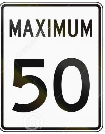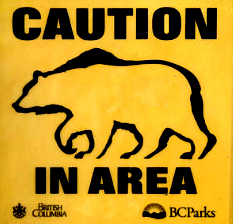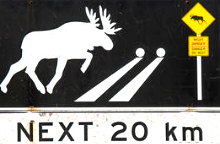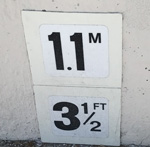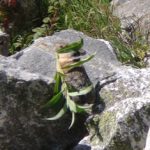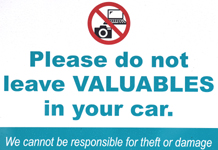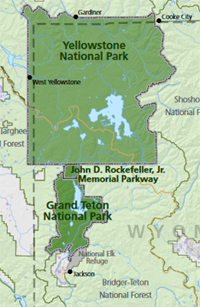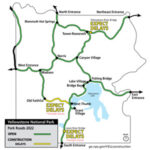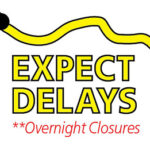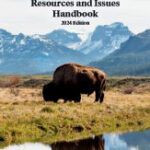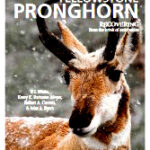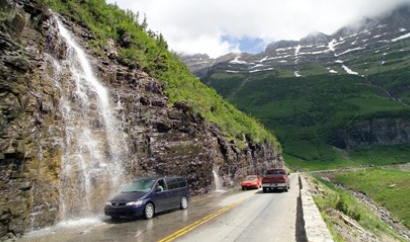People going on the De Anza College Outdoor Club between-summer-and-fall-quarter trip to Grand Teton National park should
make plans well in advance if they are tempted by a side trip to Canada on the way home.
If there is any chance you will decide to go Canada you will need a passport. If you do not have one, or if any of your potential passengers do not have one, it can take awhile to get, since you need to bring in a birth certificate when you apply for a United States passport and the birth certificate can take awhile to get.
Take a look at: https://travel.state.gov/content/travel/en/international-travel/International-Travel-Country-Information-Pages/Canada.html#/ to be sure you have proper IDs as needed to go across the border. And if you have a passenger who is under 18, you may need a document from their parent/guardian to prove it is okay they are traveling with you.
Canada does not accept passports from every county. (Usually including non-machine readable passports, temporary passports or provisional passports that some countries have.) Check that each passenger has an unexpired passport that will be accepted.
You will also need to contact your vehicle insurance carrier to get proof that your insurance policy is adequate to cover you in Canada. You should get a
Canadian Non-Resident Inter-Province Motor Vehicle Liability Card,
sometimes called a “Canadian ID card”
(FREE from your auto insurance carrier).
This is so you can prove that your USA auto policy liability limits meet the minimum requirements for (and coverage extends to) all Canadian provinces and territories.
One we got from our insurance carrier said: “Keep this evidence of liability insurance in your vehicle with your registration. A peace officer may ask for this information if you are involved in an accident or stopped for a moving violation.”
(If you are stopped by Canadian police or get in an accident in Canada
without a current Canadian Non-Resident Inter-Province Motor Vehicle Liability Card
you risk a huge fine or having your vehicle impounded until you obtain proof of adequate coverage.)
Be sure to check on insurance coverage for each potential driver of the car you are carpooling in,
not just the car owner.
Double check that you have proof of ownership / registration easy to find in the vehicle.
(The Canadian Non-Resident Inter-Province Motor Vehicle Liability Card card is also sometimes referred to as a Auto Liability Insurance Identification Card
or a Canadian Non-Resident Interprovincial Motor Vehicle Liability Card.)
A lot of driving in Canada is the same as in the U.S.
Your current U.S. driver license is valid in Canada. You drive on the same side of the road, must wear a seatbelt, not talk on your cell phone while you drive.
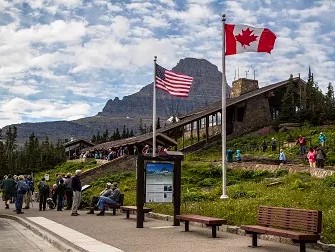
And there are other things you should know about
before crossing the border into Canada.
Do not bring fresh fruit across the border – even the banana peel or apple core in your trash. And double check other requirements before going across the border. https://www.cbsa-asfc.gc.ca/travel-voyage/menu-eng.html
Use up your firewood supply, or leave it behind for the next campers at your campsite to use.
“Clean all soil and organic debris off of any items including hiking boots, vehicles, boats . . .”
Glacier National Park said in 2020 (and we saw this again in 2025) “Be aware that you may not be able to cross the U.S./Canada border with some brands of bear spray. Canadian Customs will allow the importation of USEPA-approved bear spray into Canada. Specifications state that the bear spray must have USEPA on the label.” Please be sure to confirm this if you intend to extend your trip into Canada.
You dial the same 911 in an emergency. (But you do not call 911 in every country in the world.)
In the United States you call the Poison Control Center at 1-800-222-1222.
Note that poison control in Canada is 1-844-764-7669
(1-844-POISON-X);
Yup, you guessed it, traffics lights are the same red on the top, yellow in the center and green on the bottom.
Signs are sometimes bilingual in English “Stop” and in French as well “Arret,” or
West / Ouest,
East / EST,
Lake / Lac.
Road signs with max speeds allowed and distances are all in kilometers, not miles.
(Your vehicle speedometer probably has miles and kilometers.)
Common speed limits include 50 kilometers per hour (31 miles per hour) in cities,
80 kph (50 mph) on two-lane highways, and 100 kph (62 mph) on most highways (sometimes a highway “suggested night speed” of 80 kph).
In National Parks it may be 90 km/hr max (56 mph) on major routes and 60 km/hr max (37 mph) on secondary roads.
20 kilometers = 12.43 miles, 50 K = 31.07 M, 70K = 43+ M
Many traffic signs are a little different than in the U.S., but easily understandable.
Most signs are offered in English as well as French

Left-hand lane Diamond Lanes can be for high-occupancy vehicles / buses but they can also be the right side lane for bicycles. Besides the diamond shape on the roadway there will likely be “additional signs or markings state which vehicles are allowed.” The signs might also state how many people must be in the vehicle for it to be a high-occupancy vehicle (HOV).
To be able to understand what temperature the weather report says
(or to set the thermostat at a hotel), here are a few Celsius (Canada and most of the world)
and Fahrenheit (U.S.) temps:
40 °C / 104.0 °F
37 °C / 98.6 °F average body temperature
30 °C / 86.0 °F
21 °C / 69.8 °F room temperature
14 °C / 57.2 °F
0 °C / 32.0 °F freezing/melting point of water
In a hotel swimming pool, for example, 1.6 meters at the deep end is 5.249344 feet.
entrance = entree
elevator = ascenseur
private elevator = ascenseur prive
second floor = 2e Etage
restroom = toilette
fireplace = cheminee
A gallon Canadian = 1.2 U.S. gallon
English is Canada’s main language. French is spoken in every province, throughout Quebec and in many Atlantic cities.
The currency is the Canadian dollar, but many places accept American money. ATMs are all over and most major U.S. credit cards are accepted.
Your U.S. cell phone company might have a way for you to re-set yours to function when you cross the border, but we had no luck with that on our most recent trip there. We shopped around and found a low-cost phone with a month worth of time for potential emergency calls since we were on the road a lot.
Canadian time zones are mostly the same as mainland American time zones (Pacific Standard, Mountain Standard, Central Standard, Eastern Standard, Atlantic Standard and Newfoundland Standard, which is 1 hour and 30 minutes ahead of Eastern Time.)
 They are named Bald Eagle in both the U.S. and Canada.
They are named Bald Eagle in both the U.S. and Canada.
Pika, a favorite animal to see when hiking in the mountains, is usually pronounced “peek-uh” in Canada and “pike-uh” in the U.S.
Here are some rules for national parks in Canada that should sound familiar:
“You are not allowed to entice, pet or attempt to pet, harass or feed wild animals in the park. Pursuing animals with cameras is considered harassment. Animal behaviour is unpredictable and could result in injury if they are not given enough space.
Obstructing traffic is an offence and a hazard to other motorists. Pull over in designated pullouts only for viewing wildlife.”
“It is illegal to feed, entice or disturb any wildlife — this includes littering and leaving food, scented items or garbage unattended. Do not startle wildlife – if you make them move, you are too close. Give them space.”
“Camping is allowed in designated campgrounds only. Camping – including sleeping in a vehicle – in roadside pullouts, trailheads, and day-use areas is not allowed.”
“You are not allowed to interfere with others’ quiet enjoyment of the park during any part of the day or night. This includes loud music and shouting in campgrounds, and/or in day use areas.” And there will be enforced quiet hours.
“The recreational use of Unmanned Aerial Vehicles (UAVs), also known as drones, is prohibited in all national parks.”
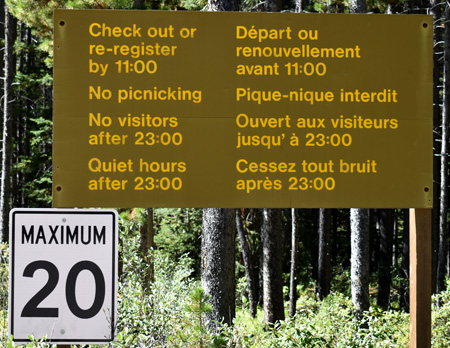
The 11:00 in the sign above is 11 A.M., the 23:00 is 11 p.m.
A maximum 20 (kilometers per hour) will show up on your speedometer as approx. 12 miles per hour
Backpacking / hiking in Glacier National Park in the northern part of Montana?
Backpackers and hikers crossing the border into Canada
without following special procedures can result in a $5,000.00 fine.
This warning from Canada can apply to any long-distance drive: “Visitors to large cities and popular tourist destinations should be aware that parked cars are regularly targeted for opportunistic smash-and-grab thefts, and they are cautioned to avoid leaving any unattended possessions in a vehicle, even in the trunk. Due to the high incidence of such crimes, motorists in Montreal, Toronto, Vancouver and some other jurisdictions can be fined for leaving their car doors unlocked or for leaving valuables in view. Visitors should exercise precaution to safeguard their property.”
Another source mentioned smashed windows when car thieves target property left in plain sight such as luggage, purses, electronics, laptops, tablets, and
even expensive sunglasses.
A National Park in a major U.S. city had this prevention advice:
Vehicle Burglaries
When visiting the park, be aware of your surroundings and the people around you just as you would anywhere else.
Protect your vehicle and belongings when visiting the park:
1. SECURE YOUR VEHICLE — Keep doors locked and windows rolled up all the way. Take ID’s, passports, backpacks, cameras, and purses with you. Always lock your vehicle, even if you only step away from it for a moment.
2. KEEP ITEMS OUT OF SIGHT — Make sure luggage, shopping bags, electronics, cell phones, cameras, and other items are hidden. Never leave anything on the seats, dashboard, or floor.
3. TAKE ELECTRONICS WITH YOU — Thieves can find phones, laptops, computers, or other devices by scanning for Bluetooth or wi-fi networks. Turn electronics completely off if you leave items hidden in your vehicle.
4. SECURE YOUR CAR KEYS — Never leave your keys in your vehicle, even if you’re just stepping away for a minute. Be careful of where you keep your spare key. Don’t store your spare key on the inside or outside of your car. It can make it easy for thieves to steal your car. A thief wouldn’t even have to find the key in the vehicle to drive away if the car has a push-start feature.
For road trips, we advise people to check everything that powers, stops, cools, heats, ventilates and lights their vehicle
well before they leave on an adventure.
People on a budget often put up with not-essential-for-safe-driving problems with their cars.
But deferred repairs and maintenance can spoil a road trip.
Here is a checklist, including things you can do yourself.
The following about side trips is from Grand Teton trip transportation,
which also has driving directions from Silicon Valley to Grand Teton park,
with ways to save time and money on the drive.
Side trips
Often in the past people on our trip to Grand Teton National Park have made the drive home into some variation of a nine-national-parks-plus-Las Vegas-or-Seattle-and-the-Pacfic-Coast-highway-in-six-days-road trip. (One student went to the trip with other current students and after the trip, headed for the college back east he was transferring to.)
Most people also go to Yellowstone National Park, which borders to the north on Grand Teton.
The south border of Yellowstone is only 8 miles from the north border of Grand Teton. It’s possible to do the whole figure eight sightseeing loop of Yellowstone’s main road (the Grand Loop) in one day, but not advised. Cumulative mileages: Upper Loop 70 mi/113 km, Lower Loop 96 mi/155 km, Grand Loop 142 mi/229 km.
At: https://www.nps.gov/yell/planyourvisit/parkroads.htm
You can find a Yellowstone road work map with roads that you can expect delays and overnight closures.
Some advice on a visit to Yellowstone National Park, recommended hikes, link to the app for time Old Faithful geyser is expected to next erupt are at: Yellowstone.
A list of books you can download for free and read in advance of a Yellowstone visit are at Grand Teton trip equipment
A side trip to the Canadian rocky mountains, for example to Banff National Park, Alberta, could be combined at the end of the trip with a one day (or longer) tour of Yellowstone.
From Colter Bay thru Yellowstone, a tour including West Thumb, Old Faithful , thru Madison and on to West Yellowstone, can be done in one day, with time for stops/picture taking, a little exploring.
From West Yellowstone (many campgrounds, hotels in the vicinity) it is only ten hours (shorter time if you don’t drive thru Calgary, and if the border crossing is short) to Canmore, Canada (just south of Banff, and preferred to Banff for less crowds), and this view from a hotel we stayed at:
This next side trip could also start with the one day tour of Yellowstone mentioned above, but instead of heading for Canada (or along with going to Canada), another very recommended side trip would be to Glacier National Park.
It is only 6 hours from West Yellowstone to Glacier National Park https://www.nps.gov/glac/index.htm
Here are a series of one minute videos about the Going To The Sun Road:
https://www.nps.gov/glac/learn/photosmultimedia/podcasts_gtsr4.htm
From the park:
“NEW IN 2021
Glacier National Park is instituting an online reservation system (ticketed entry) for the Going-to-the-Sun Road corridor between the park’s West and St. Mary Entrances for many summers. Visit the Vehicle Reservations webpage to learn more.
https://www.nps.gov/glac/planyourvisit/vehicle-reservations.htm
Here a map showing the location of Glacier Park, just south of Canada, in relation to the location of Grand Teton and Yellowstone (the dotted yellowish line diagonally across the map is part of the Continental Divide):
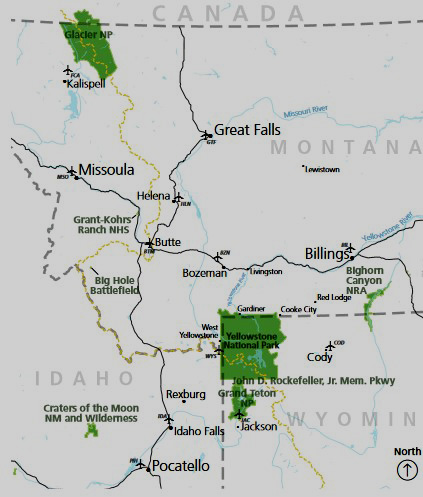
The Continental Divide is “an invisible line that separates the major watersheds flowing to different oceans.”
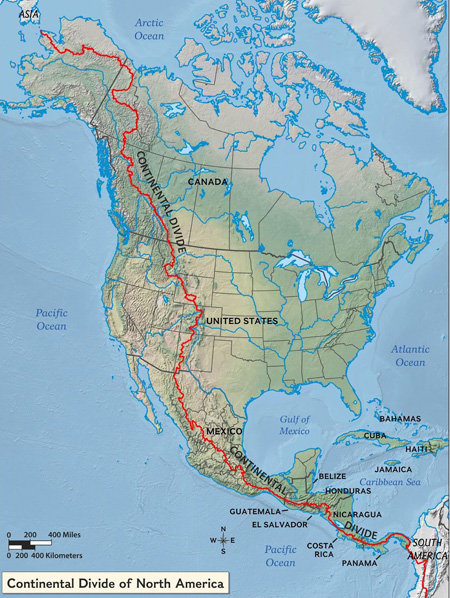
You will likely cross it more than once on our trip if you go to Yellowstone.
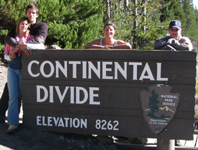
 Some students have said they also want to see Mount Rushmore. George Washington, Thomas Jefferson, Theodore Roosevelt and Abraham Lincoln are carved about 60 feet tall into rock. Please note that it is a 7+ hour drive east from the east border of Yellowstone. (An Auto Club quoted 475 miles, 7 hours, 37 minutes from our Colter Bay location to Mount Rushmore.)
Some students have said they also want to see Mount Rushmore. George Washington, Thomas Jefferson, Theodore Roosevelt and Abraham Lincoln are carved about 60 feet tall into rock. Please note that it is a 7+ hour drive east from the east border of Yellowstone. (An Auto Club quoted 475 miles, 7 hours, 37 minutes from our Colter Bay location to Mount Rushmore.)

If you make plans to visit other U.S. National Parks on the way to and from the trip, please be sure to understand any timed entry / reservations systems for an entire park, or a reservation required just to drive a major scenic roadway or just to do a popular hike.
______________________________
(Links to all Outdoor Club Coming Attractions are here.)
______________________________
